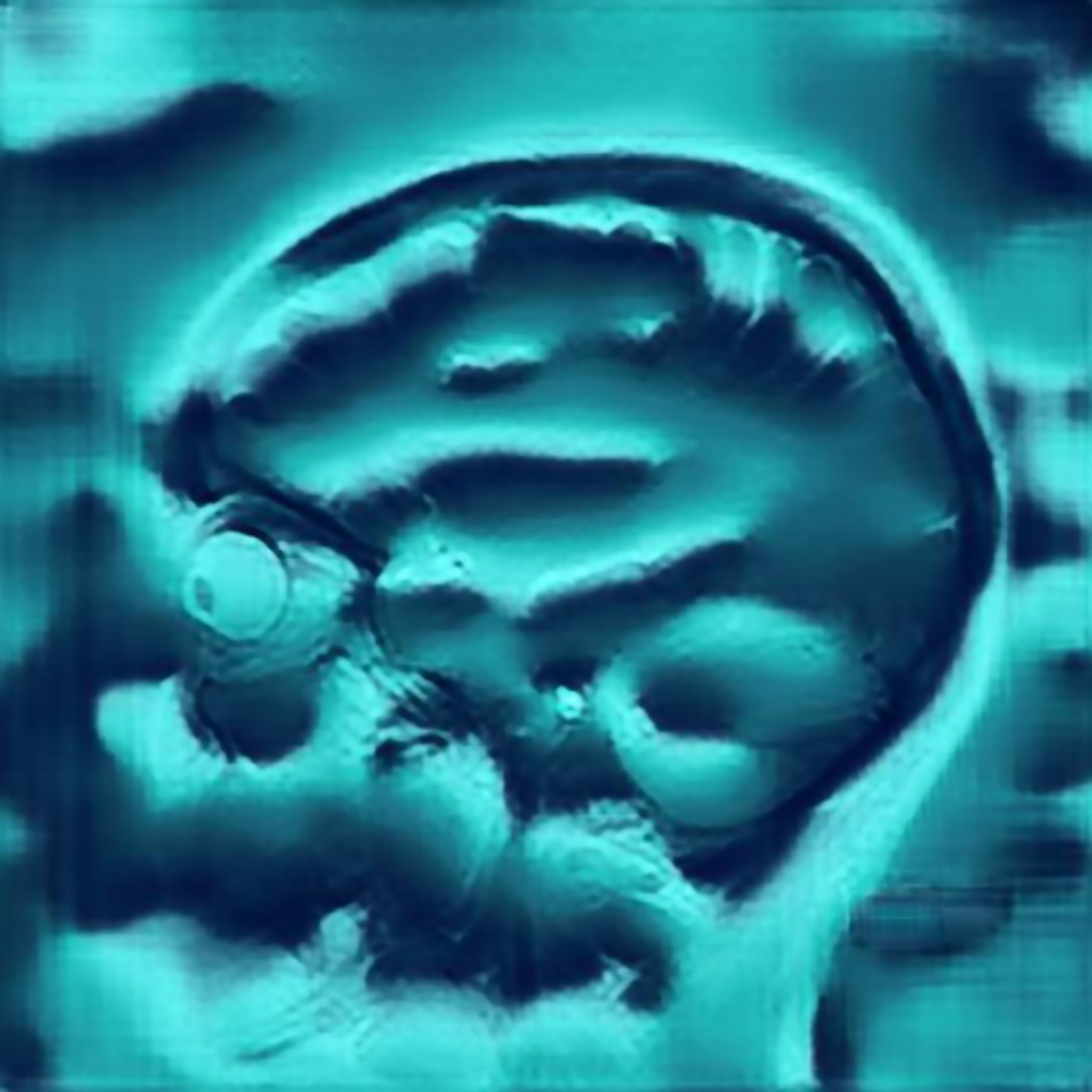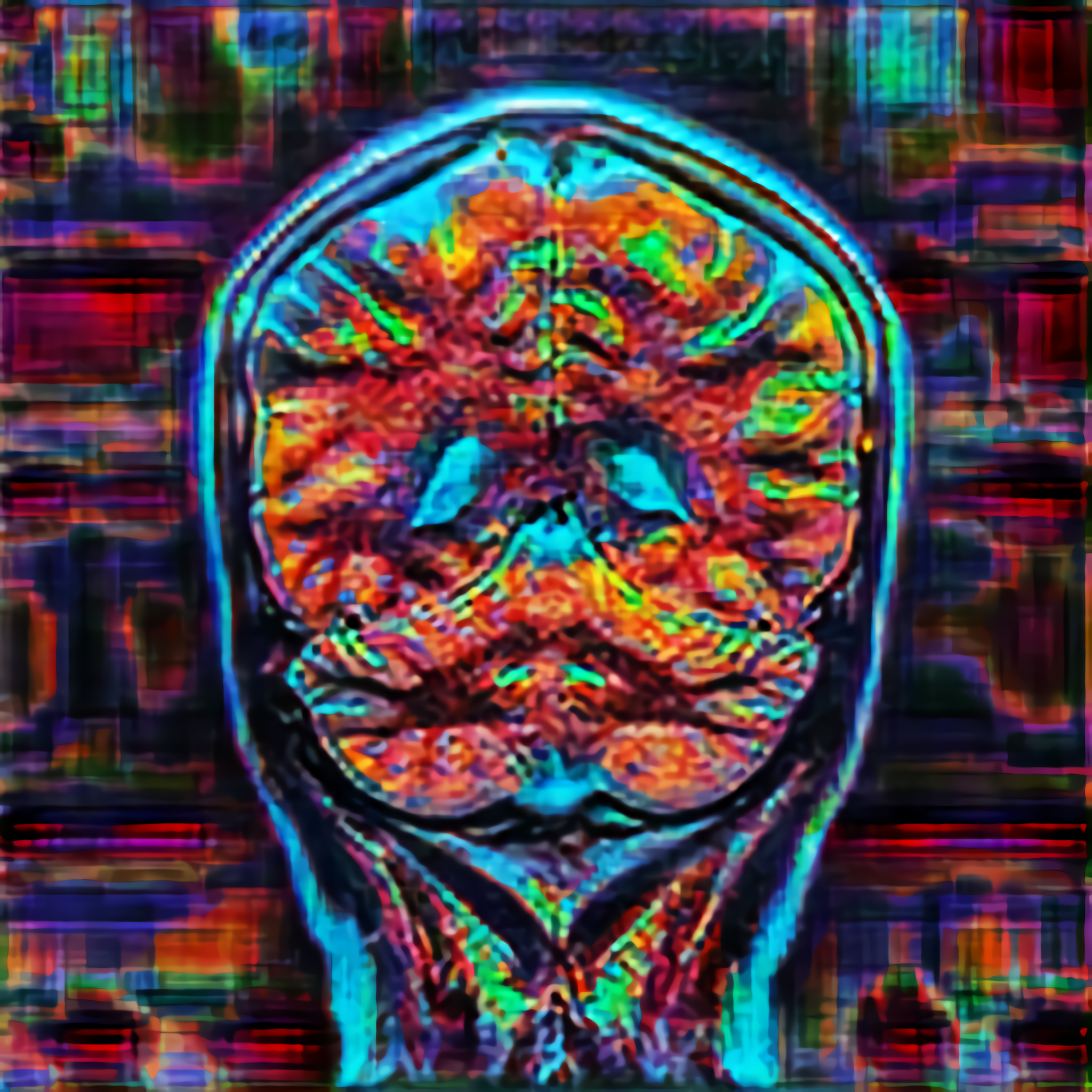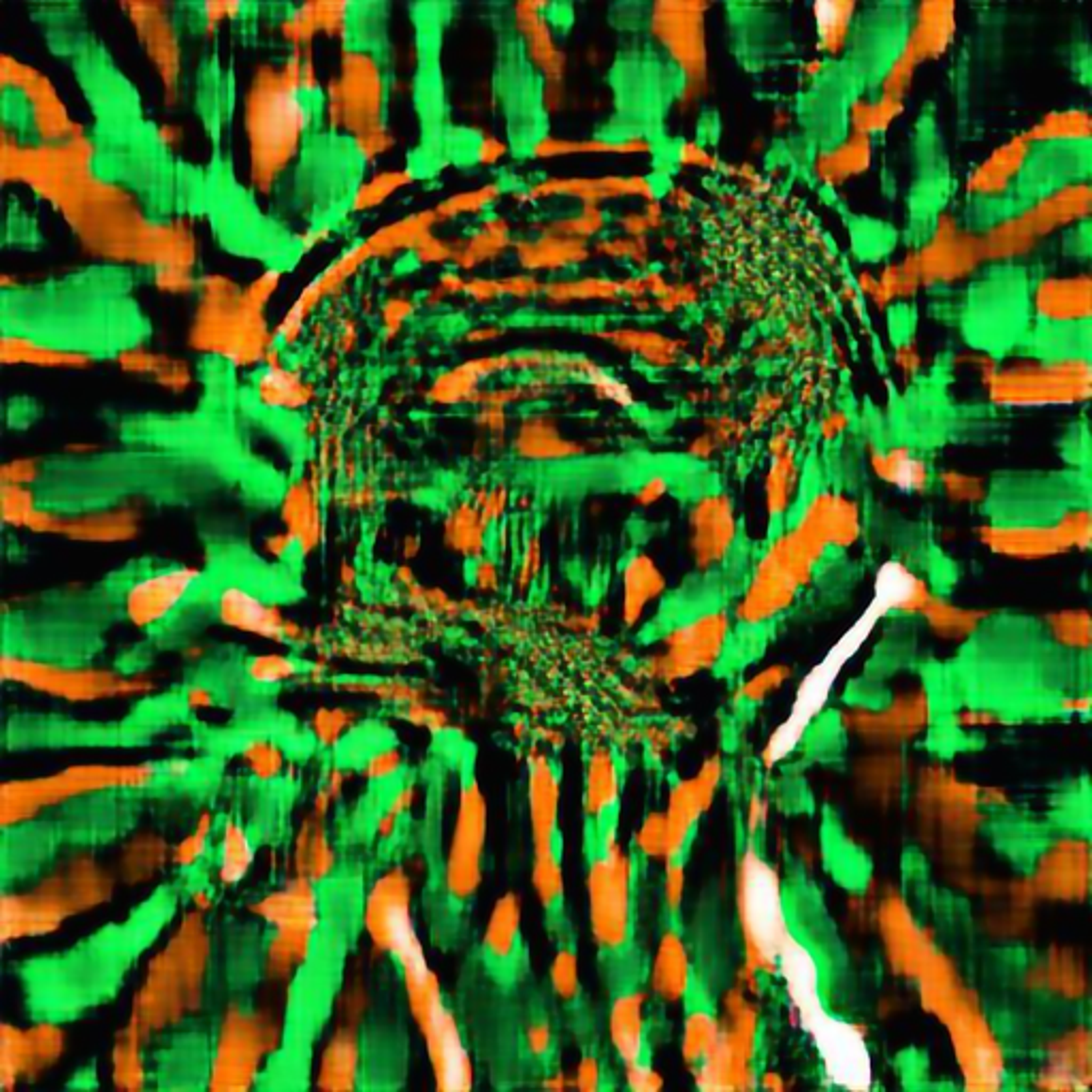Playform Resident Sturec Uses AI to Imagine What Her Brain Might Look Like on Drugs
NFT Artist Sturec’s Exhibition “My Brain on Drugs” Launches on OpenSea on 4/20
"My Brain on Drugs" is a series of original works produced by artist Sturec using Playform, no-code AI for artists. In this unique collaboration between human and machine, Sturec imagines what her brain might look like on various stimulants and hallucinogens. Integrating Playform AI, Sturec uploaded hundreds of MRI scans of her brain, and then trained the images to create new artworks applying different styles developed by the artist. While satirical at its core, "My Brain on Drugs" is not only a subjective representation of the artist's experience, but also an objective experience for its viewers to interpret. Although "My Brain on Drugs" references a human experience of alternate states, it also uses AI technology to translate these states through complex visuals.
With a background in engineering and design, the artist is a self-proclaimed “math freak,” influenced heavily by geometry and technical design. Born in Izmir, Turkey, Sturec’s artistic practice spans from design, technology, engineering and tattoo art. Now at the forefront of the NFT art space, Sturec has utilized her range of experiences to take a unique approach and perspective on digital art.
Playform is excited to announce the exhibition is available exclusively on OpenSea.
Playform Studio Associate Mirabelle Alan sat down with Sturec to talk about the artist’s latest exhibition and integration of AI.
Mirabelle: When and how did your artistic career begin?
Sturec: I began drawing and painting when I was about three, I used to paint on the walls, and my mom would have to paint over it. Then later, I became an engineer. I didn’t study art. After I graduated I moved to Paris and I studied communication and infographics, and then I received my master’s degree in design and technology in Turkey. For a long time I worked on branding designs for companies and websites, but then I realized I’m more of a fine artist than a commercial one. Once I entered the crypto art space I directly changed my path and started creating digital illustrations. In the beginning they were two dimensional, and as I practiced more my work started becoming three dimensional.
M: How did you enter into the crypto art world?
S: Originally I was trying to find something to do online that would reduce my stress because I was crypto trading everyday. I was really interested in blockchain technology, and so when I found that people were creating crypto art around 2018 I knew I wanted to get it on it. It wasn’t so popular then, it was still new, and there weren’t many platforms yet. Around 2019 I found SuperRare and I applied to them. Once I began uploading my work it felt like a little community of artists, we were some of the first ones on there.
M: As an early adopter to the crypto art space, where do you see the future of art going?
S: At the moment, it feels like it’s a bubble about to burst. Everyone is talking about crypto art and NFTs. It’s similar to how Bitcoin was in 2017, people think that NFTs are a way to ‘get rich easy.’ Big corporations and institutions are entering this world as well, so I think it has a really prosperous future but we have to wait for the burst to happen.
M: The crypto art space is male dominated, and especially was when you got your start around 2018. Did you face any obstacles as a woman and early adopter?
S: Actually I didn’t have any challenges, probably because I was an early adopter. When I entered the space, there were about 10 or 20 women artists. I do know some women artists who were also early adopters that were teased on Twitter for being crypto artists, but luckily I never had issues. I like to be more anonymous, which is why I go by Sturec, so I don’t think many people really knew that I am a woman. I didn’t want to get the attention of being a ‘woman crypto artist,’ I just wanted to be an artist. Later on I revealed my gender, but who knows if I had revealed that information earlier on.
M: Your new exhibition with Playform “My Brain on Drugs” uses pictures of your MRI brain scans, can you walk me through the process of creating this exhibition?
S: My interest in Playform made sense because I used to be a coder a few years ago, and I’ve always been interested in AI. When I saw Playform on Twitter, I knew I had to try it out. At first I wasn’t sure what I wanted to create, and I would just experiment with the platform. I would feed the AI abstract shapes and previous designs that I made Then I remembered I had a whole set of images from an MRI scan of my brain, and I wanted to see what it would be like to input them into Playform. Using those scans were the main inspiration for this series, and then it just went on from there.
M: This body of work is kind of satirical and funny, while also maintaining high visual aesthetic and artistry. Would you say your artistic practice is usually situated between the two?
S: Yes, I love to be sarcastic and kind of weird, and it was fun for me to experiment with Playform because I would put input pictures of trash or other gross things, just to see what would come out. I like to try different things, and this series is definitely different. I don’t like to be serious.
“My Brain on Drugs” is available on OpenSea on 4/20/21.





